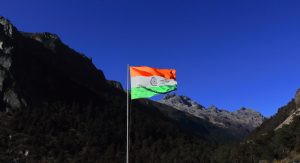India and China held a 14th round of military talks earlier this week to resolve the border confrontation between the two countries that began in mid-2020. The corps commander-level talks were held at the Chushul-Moldo border point on the Chinese side of the Line of Actual Control (LAC) that separates the armies of the two countries. A joint press release after the talks said that “the two sides had a frank and in-depth exchange of views for the resolution of the relevant issues along the LAC in the Western Sector. They agreed that both sides should follow the guidance provided by the State Leaders and work for the resolution of the remaining issues at the earliest.” The two sides also agreed that “this would help in restoration of peace and tranquility along the LAC in the Western Sector and enable progress in bilateral relations.” They noted that they will maintain “close contact” and continue their engagement through both diplomatic and military channels to “work out a mutually acceptable solution of the remaining issues at the earliest.”
The corps commander talks were led by Lt. Gen. Anindya Sengupta, the newly appointed commander of the Leh-based 14 Corps, on the Indian side and by Maj. Gen. Yang Lin, chief, of the South Xinjiang Military District, on the Chinese side. The 13th round of talks held in October did not make progress and ended with an impasse. According to reports quoting sources in the security establishment, the Indian focus for the 14th round was to focus on the disengagement process at Hot Springs (Patrolling Point 15) as well as “an early disengagement of troops in the remaining friction points in eastern Ladakh.” The Indian side also wanted to address the issues in Depsang Bulge and Demchok.
The current round of talks come against the backdrop of China accelerating its infrastructure build-up in areas of eastern Ladakh under Chinese control. Recent reports said that China is “building a bridge across the Pangong Tso within its territory connecting the North and South Banks which will significantly reduce the time for moving troops and equipment between the two sides.”
China already has excellent infrastructure along the China-India border. The importance of the new bridge is that it considerably shortens the distance between the PLA garrison at Kurnak fort on the north bank and the Modlo garrison on the south bank, which is currently about 200 kilometers, allowing for faster redeployment and transfer of forces from one sector to another. The new bridge is only about 25 kilometers away from the LAC. Since mid-2020, as The Hindu put it, China has undertaken “massive construction of accommodation for housing of troops closer to the LAC and also road infrastructure for movement of troops and mechanised forces.”
Other Indian media reports in November revealed Chinese construction of “a cluster of buildings in Arunachal Pradesh” and several villages around Doklam, the area of another confrontation in 2017. On the villages in Arunachal Pradesh, the Indian establishment maintained that these were built within Chinese territory, north of the LAC. Arunachal Pradesh Chief Minister Pema Khandu categorically rejected the reports of the villages being constructed in Indian territory. He said, “No one from the Chinese army has entered into Arunachal, neither has any kind of developmental works been taken up by the Chinese within the territory of Arunachal Pradesh.” The Indian Army also said that “the location corresponding to the coordinates mentioned… lies to the North of LAC in Chinese territory.”
Meanwhile, Indian Army Chief General Manoj Mukund Naravane while addressing an annual press conference said that the Indian Army “continued to maintain the highest levels of operational preparedness, while engaging in sustained dialogue with the PLA.” According to the chief, “Force levels are more or less the same and from our side enhanced.” Both sides appear committed “to keep over 1 lakh [100,000] soldiers… deployed through the extreme winter in the high altitude region.”
Naravane went on to say that the current stand-off is the result of a large-scale deployment by the PLA, adding that it is unclear if “they will permanently station themselves there or whether they will be amenable to some kind of de-induction in the times to come.” He also outlined India’s position, as summarized by The Hindu: “disengagement in the friction areas along the LAC, confidence building, followed by de-escalation which is moving back to the depth areas and de-induction can take place ‘only after that.’” The army chief’s comments during the press conference reflect India’s frustration with China even as it engages in both diplomatic and military talks.
But there are now additional friction points too. China has long called the Indian state of Arunachal Pradesh “southern Tibet,” but in December, it renamed 15 places in the state including eight residential areas, four mountains, two rivers and a mountain pass. In fact, the Chinese foreign ministry a year ago said that its position on the eastern sector of the border is “consistent and clear,” adding that “We have never recognized so-called ‘Arunachal Pradesh’ illegally established on Chinese territory.” The Indian Ministry of External Affairs responded to the latest development harshly by replying that “Arunachal Pradesh has always been, and will always be an integral part of India. Assigning invented names to places in Arunachal Pradesh does not alter this fact.”
In yet another aggravating move that will worsen the situation, China’s Standing Committee of the National People’s Congress in October passed a new land law that is aimed at the “protection and exploitation of the country’s land border areas.” The law came into effect on January 1, 2022. While the new law is not India-specific, the troubles along the long border with India could be further complicated, making the chances of any resolution ever more difficult.
































